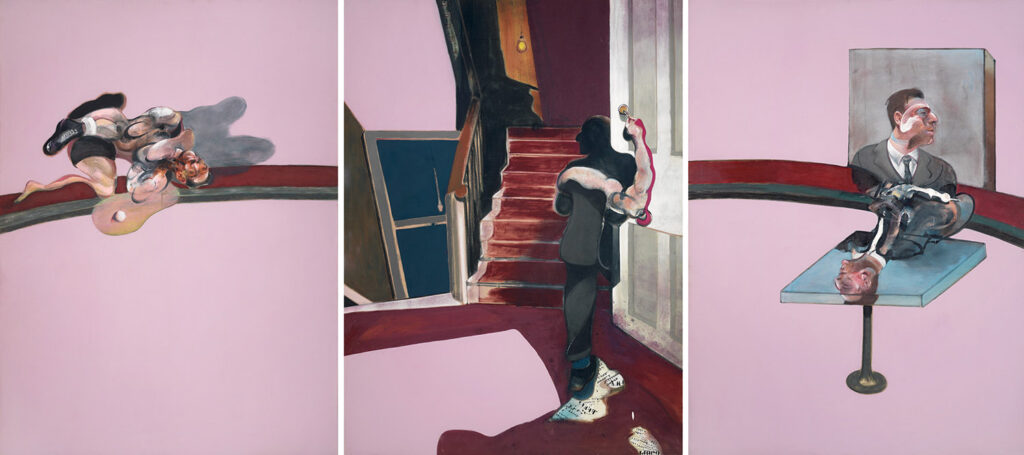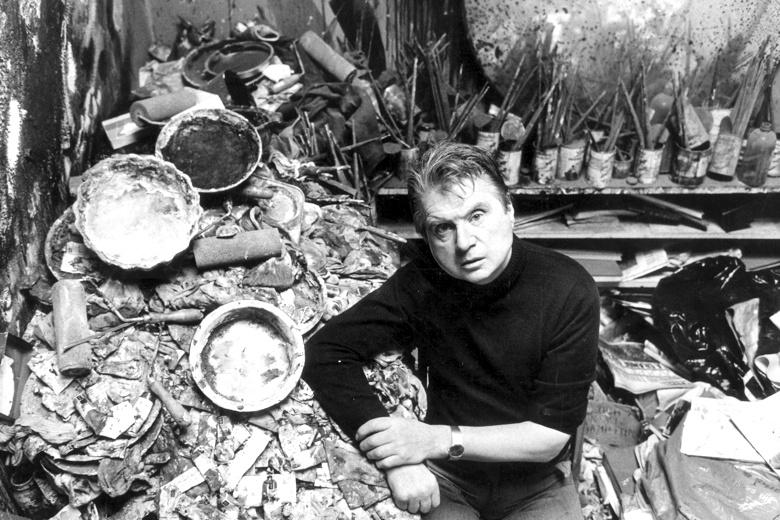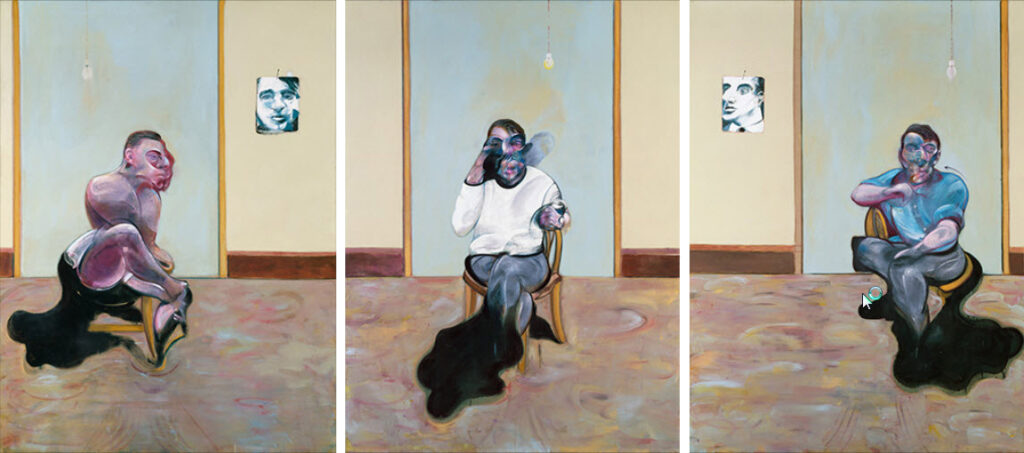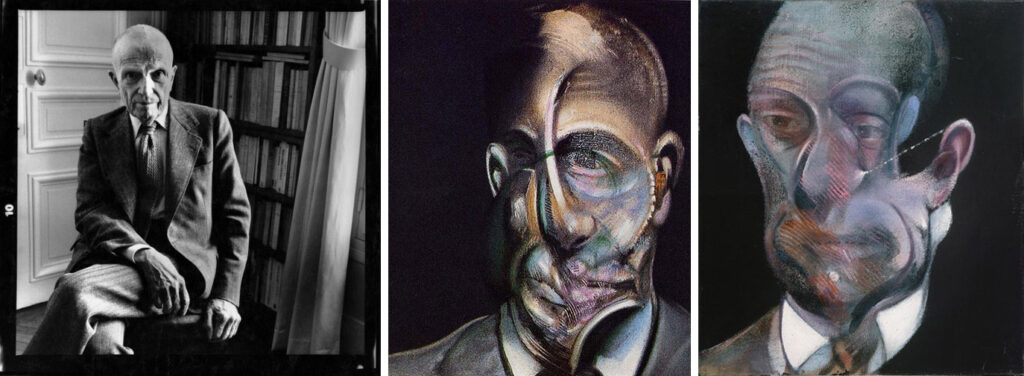+33 (0)1 40 41 96 42
“Bacon En Toutes Lettres” (The Literature of Bacon) is the major exhibition of the second semester and it would be a shame to miss it if you are in Paris, especially as the Center Pompidou which presents the exhibition is located only one kilometer from Relais du Louvre. As it is always more interesting to know about the life and sensitivity of an artist to appreciate their work, here are some facts about the painter and the exhibition which will be, we hope, useful to your visit.
Francis Bacon spent his childhood in Dublin. Driven away by his father when he discovered his homosexuality, he left Ireland at the age of 16 and went to Berlin, then Paris where in 1928 at Galeriste Rosenberg, he saw an exhibition of Picasso that triggered his desire to paint and life of odd jobs for more than a decade. A military reformer for asthma, he found himself alone and really began to paint in 1944. This was the beginning of his career.

Francis Bacon paintings are often in movement or even tortured: twists, diffusion, or a spin mix of his colors. He was touched by beauty but it could be said that he painted ugliness. He was more haunted by old age than by death. “A homosexual floats on beauty…/…but old age is a swamp” he said.
In 1961, Francis Bacon began to rent a rather modest house in the district of South Kensington in London where he installed his studio upstairs. The workshop was quickly transformed into a chaotic sedimentation of objects and materials that were only organized when moving around became almost impossible. “What is art? “he said. “It’s trying to take something out of the chaos of existence”

For Bacon, the painter must reinvent realism. “If one is able to translate the intensity of someone’s appearance, one is often led to the edge of caricature,” commented the painter. When he painted a portrait, he represented the appearance of the individual, deeply linked to his behavior, while avoiding the realization of the illustration: “We must abbreviate the intensity”.

In 1964, Francis Bacon said that he was highly inspiration by Cimabue, Rembrandt, and Velasquez, but he was also very inspired by literature. This is the first exhibition in France for more than 20 years devoted to the work of Francis Bacon and his link to literature. It comprises sixty paintings made during the last two decades of the painter, from 1971 to 1992.
Francis Bacon read especially what inspired “immediate images”. Images that he formed from the poetic universe and the existential philosophy in which he plunged.

Bacon said in 1964 that he has never created magic in his paintings. He thought he had never got it, never “succeeded”, and that motivated him to continue. Yet two years earlier, the Tate Gallery in London made the first major retrospective of Francis Bacon’s work followed in 1963 by another retrospective by the Guggenheim Museum in New York.
Unlike Picasso Francis, Bacon has preserved the fragility and humility of a wounded child.
BACON EN TOUTES LETTRES
From 11 September 2019 to 20 January 2020 from 11:00 to 21:00
Gallery 2 – Centre Pompidou
To know more about the Exhibition

19, rue des Prêtres-Saint-Germain-l'Auxerrois
75001 Paris
+33 (0)1 40 41 96 42